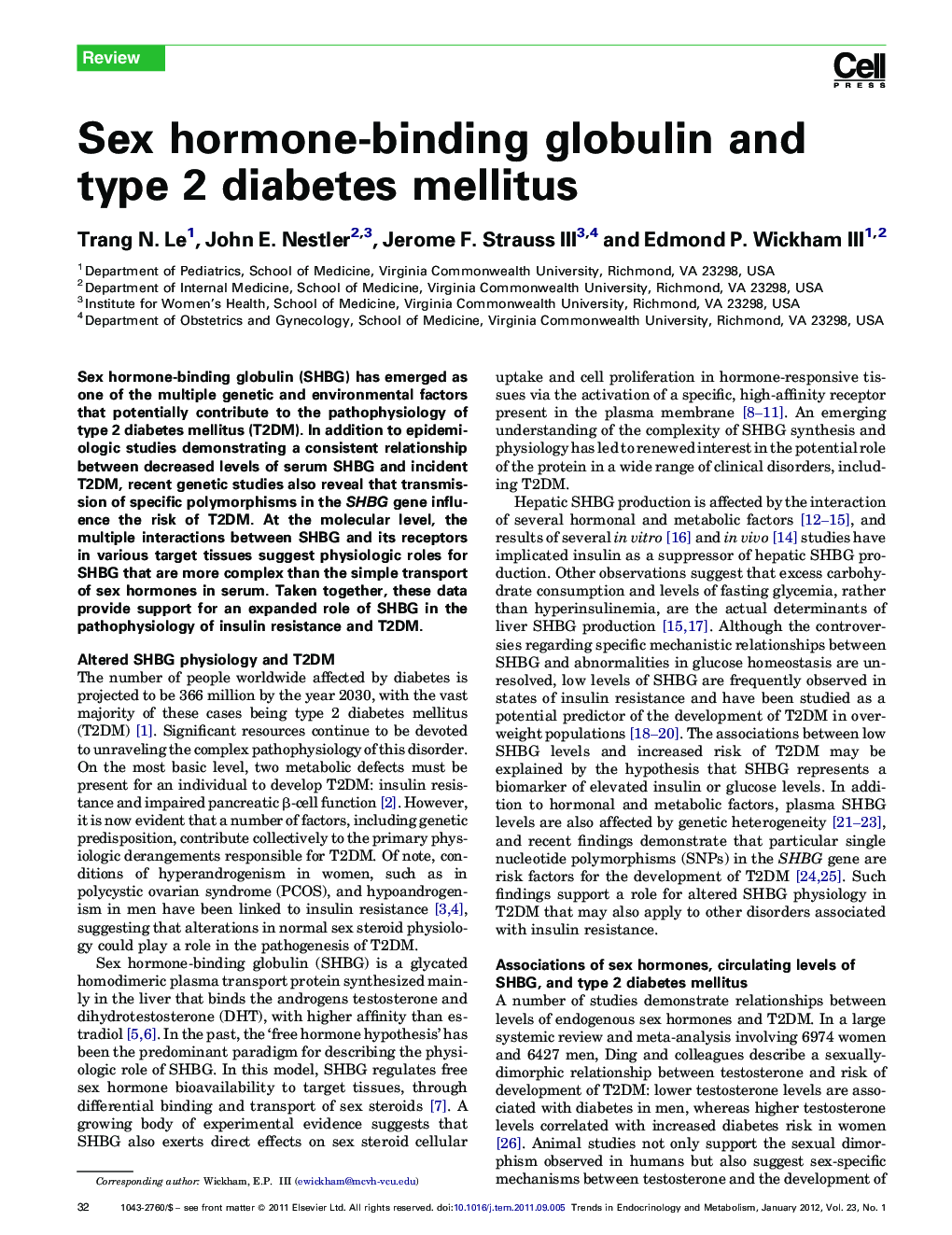| Article ID | Journal | Published Year | Pages | File Type |
|---|---|---|---|---|
| 2810563 | Trends in Endocrinology & Metabolism | 2012 | 9 Pages |
Sex hormone-binding globulin (SHBG) has emerged as one of the multiple genetic and environmental factors that potentially contribute to the pathophysiology of type 2 diabetes mellitus (T2DM). In addition to epidemiologic studies demonstrating a consistent relationship between decreased levels of serum SHBG and incident T2DM, recent genetic studies also reveal that transmission of specific polymorphisms in the SHBG gene influence the risk of T2DM. At the molecular level, the multiple interactions between SHBG and its receptors in various target tissues suggest physiologic roles for SHBG that are more complex than the simple transport of sex hormones in serum. Taken together, these data provide support for an expanded role of SHBG in the pathophysiology of insulin resistance and T2DM.
